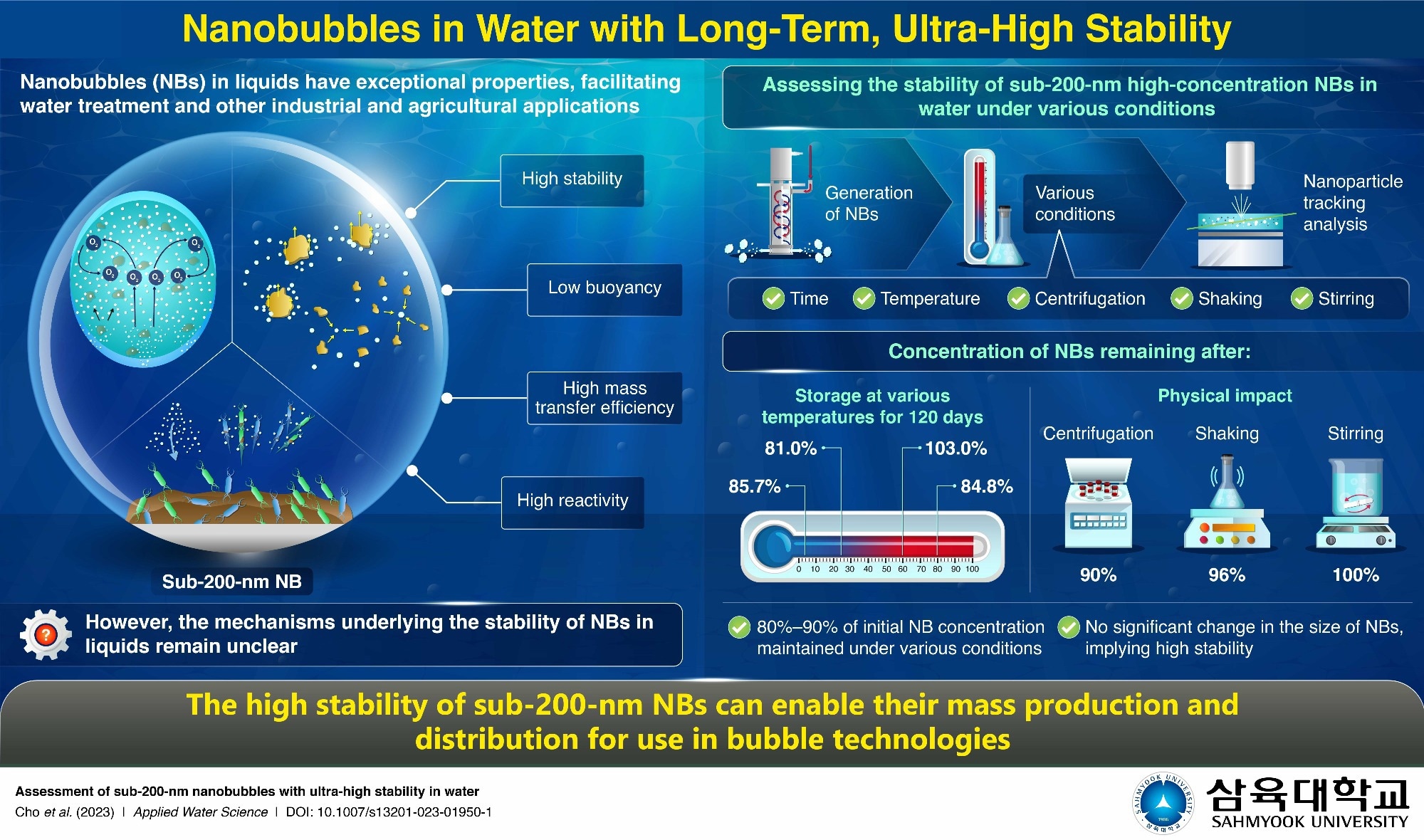Nanobubbles (NBs) are highly valuable for industrial, agricultural, and water treatment applications due to their remarkable stability. However, the mechanism underlying the stability is not clear. To address this knowledge gap, researchers from South Korea investigated the stability of high-concentration sub-200-nm NBs under various conditions, finding that they showed exceptional stability even after exposure to temperature variations and severe physical impacts. NBs, therefore, could find potential applications in mass production and distribution in bubble technologies.

Image Credit: Sahmyook University
Bubble technology has emerged as a powerful tool for addressing environmental pollution, enhancing water treatment processes, and boosting industrial and agricultural production. Such novel applications of this technology have emerged owing to the unique properties of nanobubbles (NBs)—gas bubbles smaller than 1,000 nanometers (nm) in diameter. In particular, NBs in water, especially those with diameter less than 200 nm, exhibit low buoyancy, high mass transfer efficiency, high reactivity, and exceptional stability. However, the underlying mechanism behind their stability has remained elusive, with most studies focusing only on the temporal changes in the size and surface charge of NBs and overlooking the changes in their concentration under various conditions.
To address this issue, a team of researchers led by Associate Professor Myoung-Hwan Park from Sahmyook University in South Korea has recently investigated the number and stability of high-concentration NBs in water under various conditions. Their study was made available online on 09 June 2023 and published in Volume 13, Issue 7 of the journal Applied Water Science.
Highlighting the importance of NBs, Dr. Park remarks: “The most promising consequence of using NBs is that they can enhance the original performance of various components without any additional chemicals.”
The researchers first produced air NBs in water using a custom-made NB generator, with over two billion NBs per ml of water, each approximately 100 nm in size. They analyzed the stability of the NBs using nanoparticle tracking analysis, which involves shining a laser onto nanoscale particles suspended in a liquid and tracking their movements under a microscope. This technique enabled the researchers to investigate how the number and size of NBs change under different conditions, including storage at various temperatures and exposure to physical impacts like centrifugation, shaking, and stirring.
They found that the NBs retained 80–90% of their initial concentration under all the tested conditions. Specifically, when stored at 5 °C, 25 °C, 60 °C, and 80 °C for 120 days, the NBs maintained 85.7%, 81.0%, 103% and 84.8% of their initial concentration, respectively. In addition, when subjected to centrifugation for 90 minutes, the NBs maintained more than 90% of their initial concentration, and after eight hours of shaking, the corresponding value was 96%. Stirring the NB solution for eight hours did not change their concentration appreciably either. Moreover, the NBs exhibited no significant change in size in any of the above tests.
These findings indicate that sub-200-nm NBs exhibit remarkable stability under diverse conditions. “NBs show significant potential for real-life applications in mass production and distribution of bubble technology in various fields, such as pharmaceuticals, cosmetics, cleaning, environment, food, agriculture, and more,” highlights Dr. Park. “In addition, scientists are working towards reducing the reliance on harmful but indispensable chemicals, and the use of harmless gases and NBs can further support their efforts,” he concludes.
This study can thus open up new avenues for bubble technologies offering promising prospects for a safer environment and improved efficiency in water treatment, industry, agriculture, and beyond.